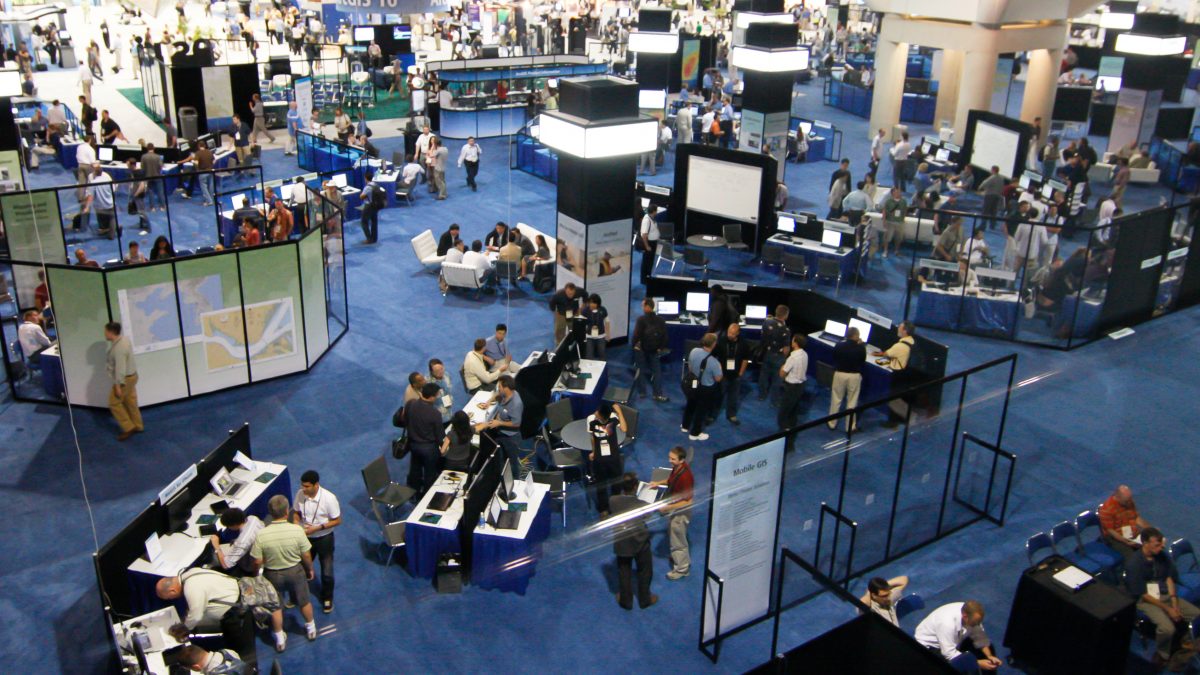
What it Takes to Make a Best-in-Class B2B Content Marketer
March 17, 2014
5 Reasons Case Studies Knock Your Marketing Outta the Park
April 1, 2014I don’t need to tell you that trade shows and corporate events are an amazing way to network, learn new things and, of course, promote your products. You guys have been doing them for years. But maybe that’s the problem.
When is the last time you took a step back and examined your trade show strategy? You might be thinking something along the lines of “if it ain’t broke, don’t fix it.” While it might be true that your existing strategy has been working well for years, consider the possibility of doing even better – engaging more buyers in more ways. Sounds great, doesn’t it?
Your strategy might have been considered tech-savvy five years ago, but it’s crazy how much can change in that amount of time. Technology has completely changed business strategies in every industry – social media and smartphones are an integral part of today’s trade show exchanges.
It’s important to understand the revolution that has taken place and claim your spot in it. Keep reading to find out how your trade show strategy can stay up to speed with technology.
You’re doing it wrong if…
You’re not leveraging smartphones and tablets.
These days, mobility is a hot topic in almost every industry. For example: mobile POS is important to restaurants, mobile payments and self-service kiosks are important to retail stores and enterprise mobility is important to supply chain businesses. So, first of all, it’s important to show that you are dedicated to providing customers with innovative solutions that leverage the latest technology.
Second of all, mobile devices can be used to make your exhibit more interactive – which is what attendees are looking for in 2014. It’s a win-win: exhibitors can use smartphones and tablets to capture payments and customer data and attendees can watch videos, play with software and get a better understanding of your products.
Third, smartphones are a valuable resource for both exhibitors and attendees to stay organized. Attendees can use their smartphones to better schedule their appointments and commitments, making sure they don’t miss yours. (And if you did a good job of promoting your opportunities through email, then they won’t want to miss out.)
You’re not sending emails.
You should be sending frequent emails to inform attendees about any symposiums, product unveilings or giveaways that your business will be involved in – or any schedule changes. This will not only keep attendees in the loop, but also get them excited about the event and make sure they have the information needed to maximize their experience.
Emails can also be sent as a way to follow up with new contacts or encourage them to interact with you, or to solicit feedback after interacting at the event.
You’re not all over social media.
C’mon guys… how many times do we have to tell you to use social media? It’s important in all industries, but especially B2B. Why? It helps people associate real faces and real pictures to all of the words on your website – because without a human connection, they are just words.
The tough part about B2B marketing is that not much is done face-to-face. Businesses across the world communicate with each other through emails and phone calls, but never really have the chance to interact – until trade shows, anyway.
That’s why trade shows are a great environment to use social media. Amidst all the hubbub, you can share information and photos about your ambassadors, your loyal customers and your latest products all at once.
Here are a few examples:
- Sort of “live tweet” your experience: “I learned so much about #mHealth at that symposium! #HIMSS”
- Post photos and videos: “Here’s our PR director, Lori, soaking up the Las Vegas sun!”
- Communicate with your new contacts: “Hey @SRGmarketing, it was great talking with you today!”
You’re not measuring your results.
These days, just about everything you do for your business can be measured with data or analytics. So why not use that data to your advantage? It’s important to find out if you’ve improved since 2013 and to set goals for 2015. Otherwise, you’re settling for the status quo and probably not standing out against your competitors.
You may feel like you are doing well at trade shows and corporate events, but how do you really know? It’s kind of like counting calories – you never really know how bad you’re eating until you see the number. To evaluate the effectiveness of your trade show strategy, leverage a marketing tool or consultant to keep track of your booth visitors, leads, interactions, social media impressions and ROI ratios. You won’t regret it.
How will you start “doing it right” at this year’s trade shows?




